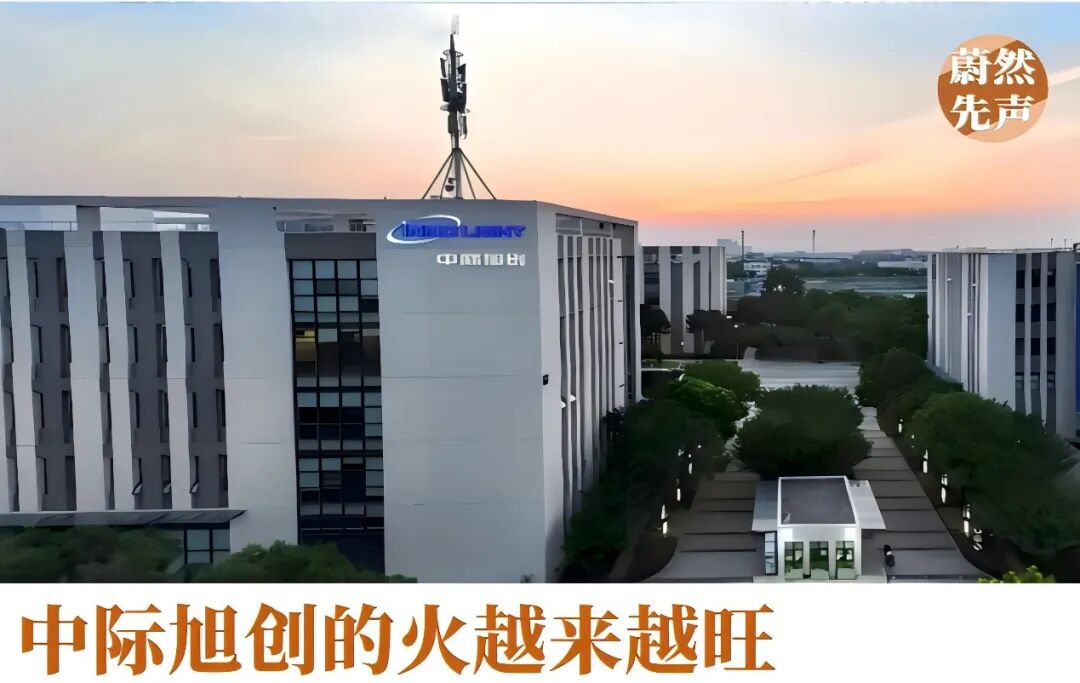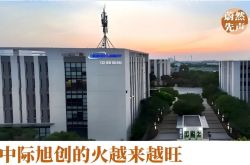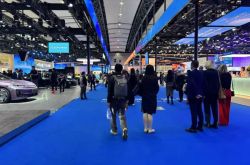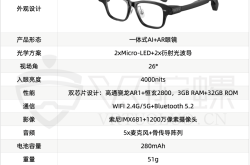Coherent Corp. Under Intense Scrutiny
![]() 11/28 2025
11/28 2025
![]() 496
496

Author: Fang Qiao | Editor: Wang Gefa
On November 26th, Coherent Corp.'s stock price skyrocketed by over 13%, closing at RMB 543.22—a record high—with a total market capitalization surpassing RMB 600 billion. The single-day trading volume hit RMB 32.98 billion, topping the A-share market. This optical module giant has seen its stock price surge by more than 342% this year, making it one of the most closely watched stocks amid the AI computing power boom.
The immediate catalyst for the stock price surge was news that Meta plans to lease TPU computing power from Google Cloud, with market speculation pointing to Coherent Corp. as a supplier of Google's optical modules. When questioned by the media, company representatives acknowledged that multiple factors influenced the stock price increase but declined to disclose specific cooperation or order details.
From breaking the RMB 200 mark in early September to surpassing RMB 500 in November, Coherent Corp. doubled its stock price in just over two months. However, behind this high-performance growth, controlling shareholders and executives have been reducing their stakes since August, with preparations for an H-share listing kicking off in November. Meanwhile, inventory and financial expenses have risen sharply, sparking widespread market discussions.

Coherent Corp.'s performance growth is directly fueled by the global AI infrastructure construction boom. Third-quarter report data reveals that the company's revenue for the first three quarters reached RMB 25.005 billion, a year-on-year increase of 44.43%, with net profit attributable to shareholders hitting RMB 7.132 billion, up 90.05% year-on-year.
In the third quarter alone, revenue soared to RMB 10.216 billion, a 56.83% year-on-year increase, with net profit reaching RMB 3.137 billion, a 124.98% year-on-year surge. Net operating cash flow stood at RMB 5.455 billion, marking a significant 314.54% year-on-year increase.
Optical modules are critical components in data centers, responsible for converting optical and electrical signals. AI training and inference demand extremely high computing power, with each AI GPU typically requiring 6 to 8 optical modules. Tech giants like Microsoft, Google, Meta, and Amazon are projected to spend USD 330 billion on capital expenditures in 2025, a 53% year-on-year increase, with most investments earmarked for data center construction.
Huawei's report forecasts that global computing power will increase by 100,000 times by 2035, with demand expansion bringing tangible orders to optical module manufacturers.
According to Lightcounting data, Coherent Corp. has maintained the top global market share in optical modules for four consecutive years, with a market share exceeding 40% in the 800G high-end product segment in 2024. In the first half of this year, the company sold 9.05 million optical modules, a 46% year-on-year increase, with overseas sales accounting for over 85%, primarily in North America and Europe.
In terms of product structure, revenue from high-speed products of 800G and above accounted for nearly 90%, with 1.6T products commencing mass production and delivery in the second quarter.
Profitability improvements are even more striking, with the company's gross profit margin rising from 33.83% in the same period last year to 39.96%, and the net profit margin reaching 28.69%. The net profit margin for the first three quarters further climbed to 30.27%. Sales, management, and research and development expense ratios decreased to 0.64%, 2.02%, and 3.78%, respectively, with expense growth rates lower than revenue growth rates.
Guosheng Securities believes that the optical module industry is experiencing both volume and price increases. The retail price of 1.6T optical modules has surged, with strong demand for 800G and below products slowing down price reductions.
During an institutional conference call on October 31st, the company disclosed that key customers began deploying 1.6T in the third quarter and continued to increase orders, with shipments expected to sustain growth in the coming quarters. Other key customers are also anticipated to deploy on a large scale from 2026 to 2027.

While performance is improving, a series of capital operations have sparked market discussions. On August 1st, company director and executive vice president Wang Xiaodong revealed plans to reduce his stake by up to 719,000 shares within three months. Wang Xiaodong is a concert party of the actual controller Wang Weixiu.
On September 26th, the controlling shareholder Zhongji Investment announced plans to reduce its stake by up to 5.5 million shares through block trades, amounting to over RMB 2.6 billion at the time. Meanwhile, Suzhou Yixingfu, associated with chairman Liu Sheng, reduced its stake by approximately 4.63 million shares, cashing out over RMB 900 million.
For a company with doubled net profit and abundant cash flow, questions arose about why controlling shareholders still needed funds. On November 10th, a new perspective emerged when the company announced that the board had authorized management to commence preparations for an H-share listing. The announcement stated that this move aimed to advance internationalization strategies and enhance overseas financing capabilities. However, from a timing and operational logic perspective, this appears more like an active adjustment during a high valuation cycle.
From the third-quarter report, the company's inventory reached RMB 11.216 billion, a 52.64% year-on-year increase. While explained as an increase in orders leading to material preparation, in a fast-paced industry with rapid technological iterations, increased inventory implies higher price risks.
Financial expenses surged by 496% year-on-year to RMB 43.44 million, primarily due to increased exchange losses and interest expenses. The balance of construction in progress was RMB 980 million, a significant 1765.65% year-on-year increase, indicating substantial capital investment for expansion.
Industry competition is also intensifying, with optical module leader InnoLight reporting revenue of RMB 16.505 billion in the first three quarters, a 221.7% year-on-year increase, and net profit of RMB 6.327 billion, a 284.38% year-on-year surge, surpassing Coherent Corp.'s growth rate. High market enthusiasm is attracting more players, with capacity expansion potentially leading to oversupply and inevitable price wars.
In terms of accounts receivable, they reached RMB 6.345 billion at the end of the first half of 2025, a 59.32% year-on-year increase, with the collection period extending from 54 days to 66 days. These are all signals to be vigilant about during rapid expansion.
Minsheng Securities predicts that the company's net profit attributable to shareholders will be RMB 9.535 billion, RMB 14.376 billion, and RMB 17.969 billion for 2025 to 2027, respectively. From a technological perspective, the company has made strategic investments in silicon photonics and CPO, with 1.6T products entering mass production.
However, from a cyclical perspective, the optical module industry is unlikely to maintain ultra-high gross profit margins in the long term. As capacity increases, price competition will become increasingly fierce.
Disclaimer: The content of this article is for reference only. The information or opinions expressed do not constitute any investment advice. Readers are advised to make investment decisions cautiously.
-END- For more content, please follow








